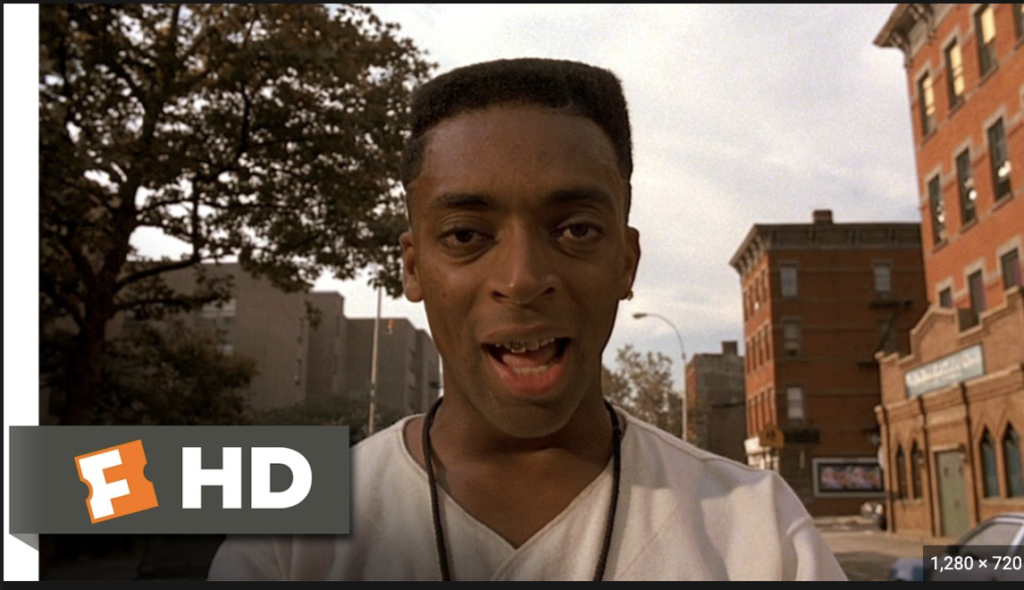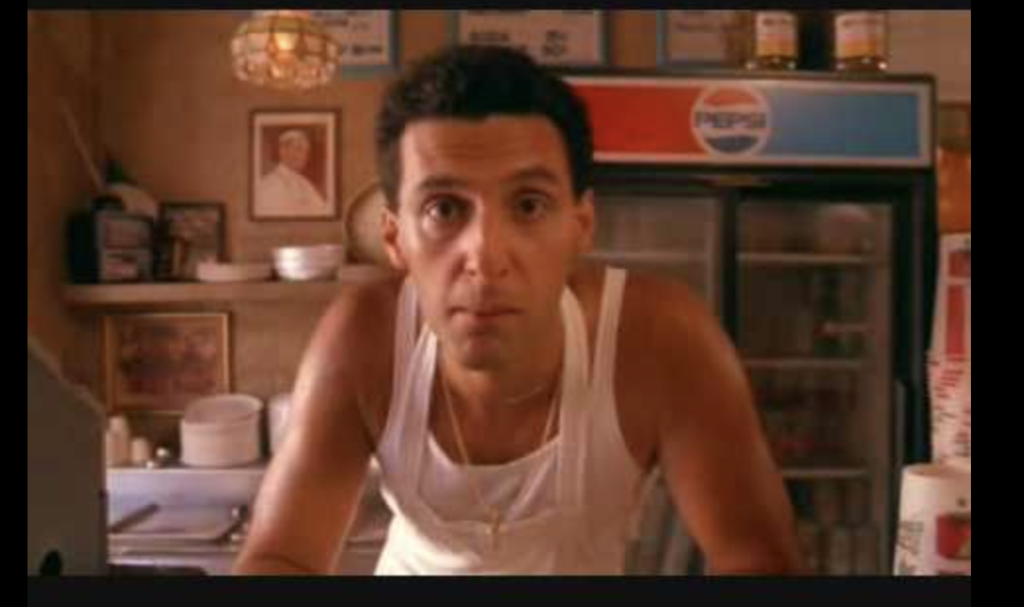In “Do the Right Thing,” we see how different races of people interact in a Bed-Stuy neighborhood. Throughout the film, there is a lot of tension built up between Pino and Mookie which blows up into a “roast battle.” Mookie begins by insulting Italians by using racial stereotypes such as “pizza slinger.” The next shot cuts to Pino listing negative stereotypes and racist names about Black people, then Stevie disrespects Asians, the officers then disrespect the Latinx community, and Sonny ends by disrespecting the Jewish community.

However, all these shots are filmed with an individual character in front of the camera, looking directly at the camera and letting the insults fly. Lee takes a break from the original storyline and has characters directly address the audience with these racial stereotypes. I believe Lee wanted to call out everyone watching the film. The ones that say “I don’t have a racist bone in my body” or “I don’t see color.” The way the characters act and speak in the movie is a manifestation of the racial stereotypes America defines these races with. The Italians wear tank tops and gold chains, the Black people play loud music, the Latinos listen to salsa while drinking beer, etc. I believe Lee beautifully depicted race relations in his film by shooting these scenes exactly the same, he shows that everyone has rude and racist comments to say about each other. It’s not as though one is better than the other, but each character had racist comments to say about the next. The emphasis in the beginning of the film of it being an extremely hot day in NYC also showed how these groups of people would be a lot more irritable. In a powerful cinematic approach, Spike Lee goes against conventional storytelling, having characters break the fourth wall and confront the audience with racist stereotypes.

Hello Jori! This scene was my favorite in the film. It was the one that most impacted me. In this scene, the film becomes a mirror reflecting the uncomfortable reality of how racial stereotypes manifest in everyday interactions. Spike Lee’s decision to have characters directly address the audience with racial stereotypes is a bold and effective cinematic choice. It serves as a direct confrontation of the viewers, challenging those who claim not to have a “racist bone in their body” or assert color blindness. The deliberate portrayal of each character, from Mookie to the officers, engaging in the exchange of derogatory stereotypes about different racial and ethnic groups is a stark reminder of the pervasive nature of racial biases.